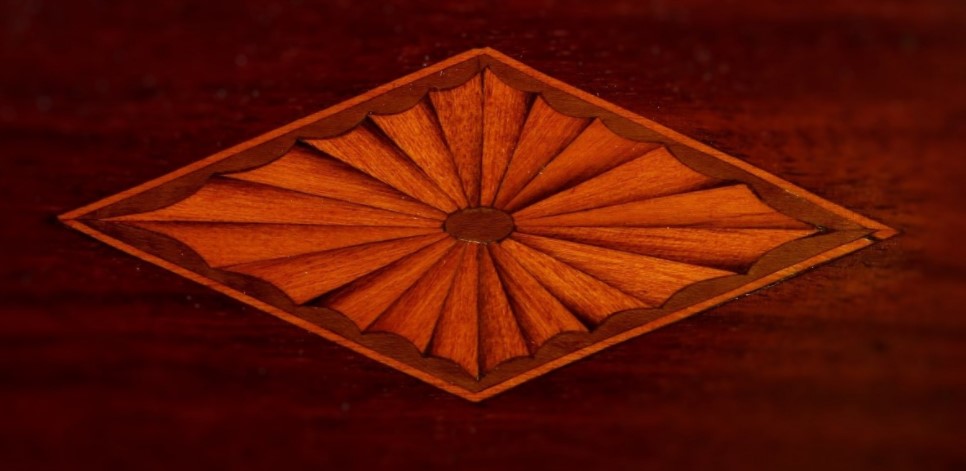Veneer
Contents |
[edit] Introduction
Veneer can be defined as a thin sheet of material that has been fixed to a base material. Typically, the sheet of material is a type of decorative wood that adheres to the a carcass.
Veneer is typically an expensive material that may be rare or highly decorated. Some veneers include marquetry or parquetry inserts inlaid into a larger section of veneer. The material used as the base underneath the veneer may be softwood or even laminated board. In some instances, a solid material may be used - particularly in the case of furniture.
[edit] History
There is evidence that veneer was used in Ancient Egypt with examples found in the tomb of Tutankhamen. The technique became more widely used in England, Italy and France in the 16th century.
As global exploration increased in the 18th century, new types of wood (such as mahogany and Brazilian rosewood) were used for furniture making. Marquetry veneers also began to incorporate exotic and semi-precious materials such as brass, ivory and tortoiseshell.
By the early 19th century, veneers were less elaborate in terms of decorative patterns but their use became more widespread. Veneer would be used over the entire carcass of the item, but decorations would be simple, incorporating linear patterns or floral designs. In the Victorian age, the imperfections of solid wood furniture could be covered by veneers of the same material but of a better quality and finish.
[edit] Modern uses of veneers
Modern veneers are typically glued onto the base surface. They can be manufactured into extremely thin materials and may not even be apparent. Some veneers are made from wood but there are plastic veneers as well.
Laminated veneer lumber (LVL) is a type of high-strength engineered timber that can be used as an alternative to solid timber, concrete and steel for structural applications. It is manufactured by bonding rotary peeled or wood veneers that have been sliced thinly under heat and pressure.
There is also a brick veneer (or brick slip) which is a thin layer of brick that is used as a surface finish rather than a structural one. Brick veneers can be used for both indoor and outdoor applications and can be applied to almost any surface. A range of special brick slips are available for certain conditions (such as corners) to continue the illusion that walls are constructed from full bricks.
[edit] Related articles on Designing Buildings
Featured articles and news
Latest Build UK Building Safety Regime explainer published
Key elements in one short, now updated document.
UKGBC launch the UK Climate Resilience Roadmap
First guidance of its kind on direct climate impacts for the built environment and how it can adapt.
CLC Health, Safety and Wellbeing Strategy 2025
Launched by the Minister for Industry to look at fatalities on site, improving mental health and other issues.
One of the most impressive Victorian architects. Book review.
Common Assessment Standard now with building safety
New CAS update now includes mandatory building safety questions.
RTPI leader to become new CIOB Chief Executive Officer
Dr Victoria Hills MRTPI, FICE to take over after Caroline Gumble’s departure.
Social and affordable housing, a long term plan for delivery
The “Delivering a Decade of Renewal for Social and Affordable Housing” strategy sets out future path.
A change to adoptive architecture
Effects of global weather warming on architectural detailing, material choice and human interaction.
The proposed publicly owned and backed subsidiary of Homes England, to facilitate new homes.
How big is the problem and what can we do to mitigate the effects?
Overheating guidance and tools for building designers
A number of cool guides to help with the heat.
The UK's Modern Industrial Strategy: A 10 year plan
Previous consultation criticism, current key elements and general support with some persisting reservations.
Building Safety Regulator reforms
New roles, new staff and a new fast track service pave the way for a single construction regulator.
Architectural Technologist CPDs and Communications
CIAT CPD… and how you can do it!
Cooling centres and cool spaces
Managing extreme heat in cities by directing the public to places for heat stress relief and water sources.
Winter gardens: A brief history and warm variations
Extending the season with glass in different forms and terms.
Restoring Great Yarmouth's Winter Gardens
Transforming one of the least sustainable constructions imaginable.























